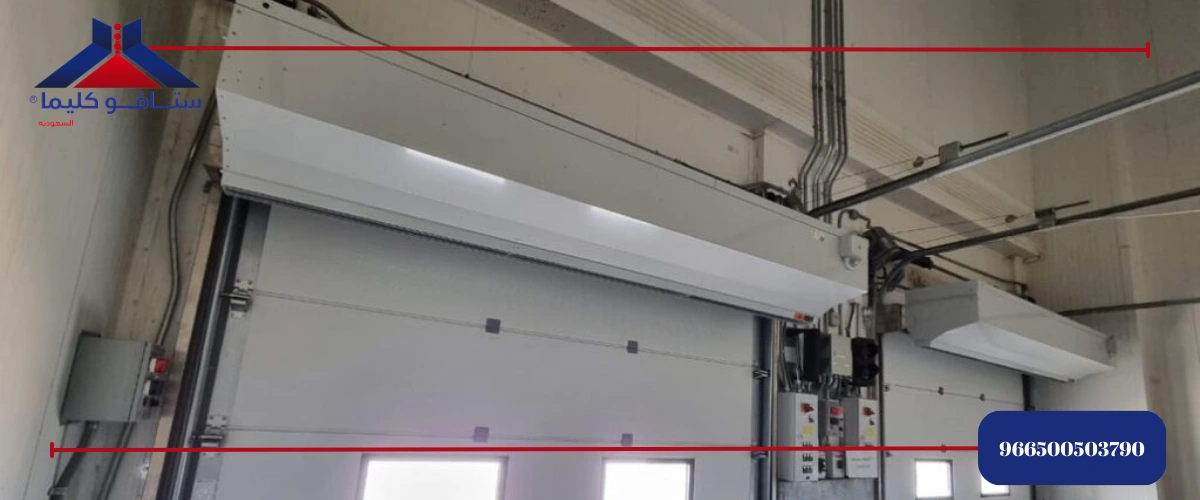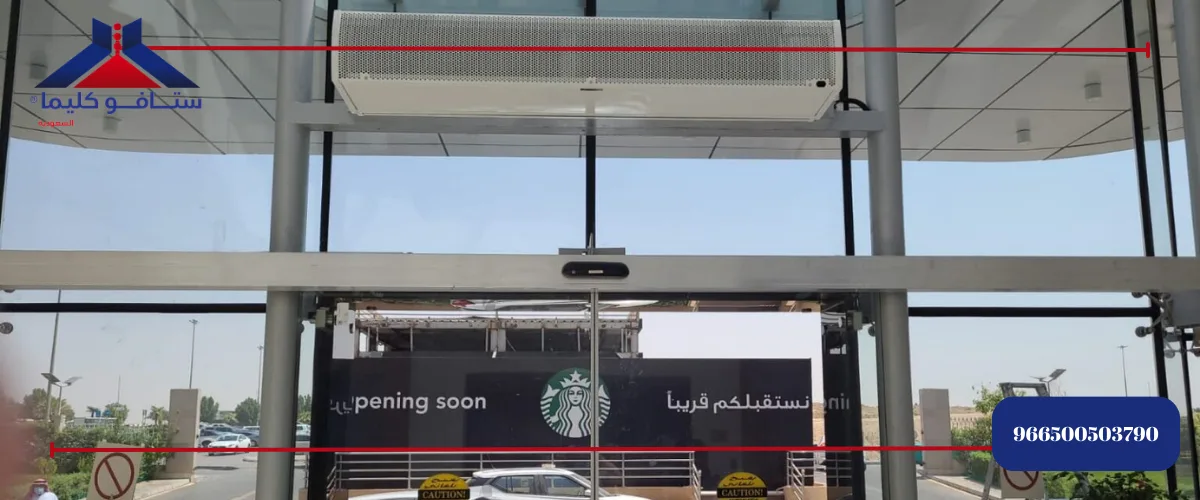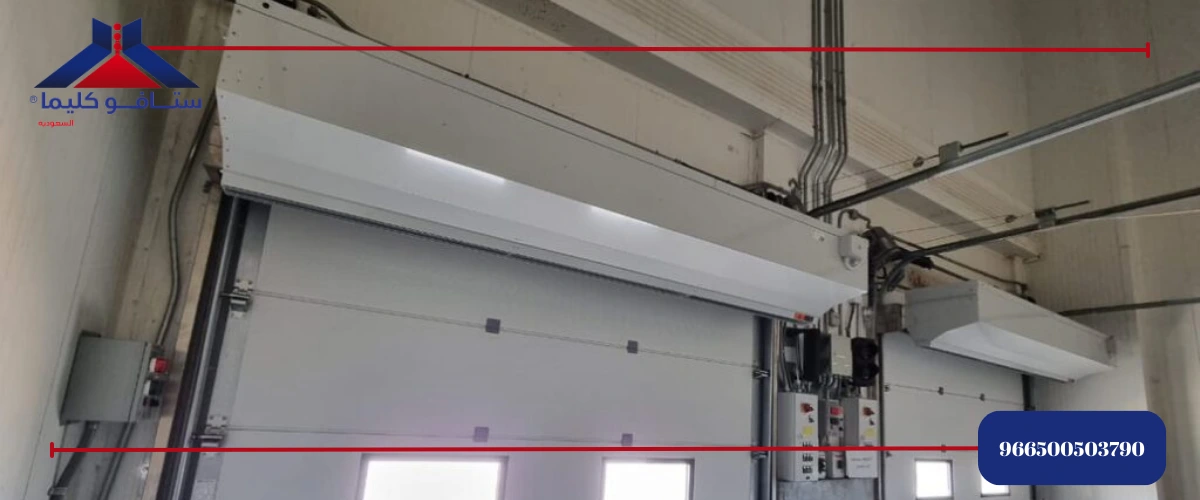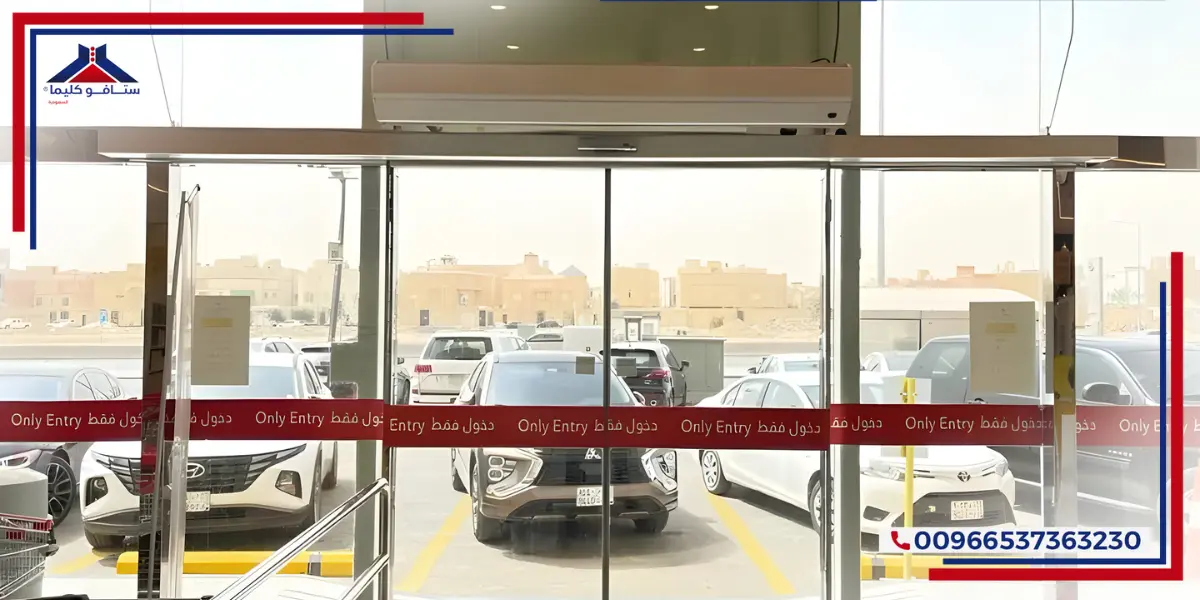Transparent air insulation curtains and air curtains are two options that rely on different technologies to achieve the same goal. In this article, we will review the specifications and advantages of both types of curtains, helping you understand the differences and make the right decision to meet the insulation, heating, or cooling needs of commercial and industrial spaces.
Table of Contents
ToggleDefinition of Transparent Air Insulation Curtains and Their Importance
Transparent air insulation curtains are coverings or layers typically made from transparent materials such as plastic or polyvinyl, installed on windows and doors to enhance air insulation in buildings. They are used to minimize heat or cooling loss through windows and doors, maintaining desired indoor temperatures by preventing the leakage of cold or hot air from the outside.

Challenges and Issues of Transparent Curtains
Despite the benefits provided by transparent air insulation curtains, they come with several challenges and issues that users should be aware of:
- Lack of privacy: Due to their transparency, outsiders can easily see inside the house during the day, reducing privacy levels.
- Solar radiation issue: Transparent curtains may allow harmful solar radiation to enter, increasing room temperatures on hot days and potentially causing damage to furniture and belongings.
- Privacy at night: At night, when external lighting is low, transparent curtains lose their ability to provide privacy.
- Limited light control: While transparent, they may offer limited control over the amount and intensity of incoming light, which can affect visual comfort at times.
- Freezing in winter: In areas with low temperatures, transparent curtains may freeze on windows, reducing their insulation effectiveness.
- Maintenance: Dust and dirt can accumulate quickly on transparent curtains, requiring regular cleaning and maintenance.
- Purchase cost: Transparent air insulation curtains can be more expensive than some other traditional curtain types.
- Impact of children and pets: Transparent curtains may be prone to damage from scratches or play by children or pets.
Read also: Problems and Drawbacks of Used Air Curtains and Why They Are Not Recommended
Get rid of transparent curtains and their drawbacks.
Renew your curtains with Stavoklima and get European-quality air curtains.
What Are Air Curtains and Their Importance?
Air curtains are an air insulation system used in buildings to maintain indoor temperatures in homes or commercial spaces. These curtains create an air barrier between the interior and exterior at windows and doors, achieved through a fan that continuously blows and regulates air.
The importance of air curtains lies in several aspects:
- Effective thermal insulation: Air curtains prevent the leakage of cold air in winter and hot air in summer, maintaining the desired building temperature and reducing energy consumption.
- Energy savings: With precise temperature control and efficient thermal insulation, air curtains minimize the need for intensive heating and cooling, lowering energy costs.
- Environmental protection: By reducing energy consumption and greenhouse gas emissions, air curtains contribute to environmental preservation and sustainability.
- Enhanced comfort: Air curtains make buildings more comfortable by maintaining optimal temperatures and providing sound insulation.
- Improved air quality: Some air curtains include filters to purify air and remove harmful particles, improving indoor air quality.
- Air direction control: They allow directed airflow either inward or outward, enabling precise control of air distribution within the building.

Benefits of Air Curtains for Air Insulation and Purification
Air curtains offer multiple benefits for air insulation and purification in buildings. Here are some of the main advantages:
- Excellent thermal insulation: Air curtains help reduce the leakage of cold air in winter and hot air in summer, improving the efficiency of heating and cooling systems, and lowering energy consumption and electricity bills.
- Improved air quality: Some air curtains are equipped with air filters to purify the air, removing harmful particles, dust, and odors, thus enhancing indoor air quality and reducing allergy and sensitivity issues.
- Environmental preservation: By reducing energy consumption, air curtains decrease greenhouse gas emissions, contributing to environmental sustainability.
- Comfort and precise control: Air curtains provide comfort for occupants by maintaining appropriate indoor temperatures, minimizing extreme temperature fluctuations, and allowing precise control over air distribution within the building.
- Airflow direction: They allow directed airflow inward or outward, ensuring even and efficient air distribution throughout the building.
Discover Stavoklima customers' opinions on air curtains below:
تتحقق Trustindex من أن المصدر الأصلي للمراجعة هو Google. تجربه ممتازه وشركه رائده في تركيب الستائر الهوائيه وفريق عمل رائعتتحقق Trustindex من أن المصدر الأصلي للمراجعة هو Google. شغلهم مرتب مواعيد مزبوطه الصيانه بسرعه تجاوب من الكل الله يعطيهم العافيهتتحقق Trustindex من أن المصدر الأصلي للمراجعة هو Google. خامات جيده جدا وعمليه أنصح بشراؤها والمهندسين والفنين غايه فى الإحترام ويجدون العمل فى صمت ماشاء اللهتتحقق Trustindex من أن المصدر الأصلي للمراجعة هو Google. تعامل راقي جدا في المبيعات وجودة فريق التسليم . وكذلك دقة في العملتتحقق Trustindex من أن المصدر الأصلي للمراجعة هو Google. I need to provide a positive evaluation for Stavoklima the Air Curtains supplier ,who has recently worked with us ,their performance and dedication to the project have been commendable ,their timely execution of tasks and quality of work delivered have met our expectations exceptionally well . Moreover, their team has demonstrated great supportiveness throughout the duration of the project ,contributing positively to its successful completion . We look forward to continuing our collaboration with Stavoklima and would recommended their services based on our positive experience . Finally i would like to thanks Eng.Alshafi and Br.Alkhatem for their great effort in completing the installation on timeتتحقق Trustindex من أن المصدر الأصلي للمراجعة هو Google. زارنا اليوم مهندس إياد والفنيين صراحة الشغل نظيف وتسليم نظيف والستارة شغالة 100% وكل شي برفكت وجايين من الرياض إلى الدمام يركبونها الله يعطيهم العافيه قمة الذوق والأخلاقتتحقق Trustindex من أن المصدر الأصلي للمراجعة هو Google. Very good professional in installationتتحقق Trustindex من أن المصدر الأصلي للمراجعة هو Google. Excellent product, prices and treatment
Key Differences Between Transparent Curtains and Air Curtains
Transparent curtains and air curtains are two distinct insulation systems for buildings, with significant differences in insulation, overall performance, cost, maintenance, and ease of installation.
Here is a summary of these differences:
- Insulation:
- Transparent Curtains: Rely on transparent materials to prevent the leakage of cold or hot air through windows and doors. Their thermal insulation may be less effective compared to air curtains.
- Air Curtains: Create an air barrier between the interior and exterior, providing more effective thermal insulation by preventing the flow of cold or hot air into the building.
- Overall Performance:
- Transparent Curtains: Offer limited thermal insulation but allow natural light and visibility.
- Air Curtains: Provide better thermal insulation and allow precise control of temperature and humidity within the building.
- Cost:
- Transparent Curtains: Generally less expensive to purchase and install compared to air curtains.
- Air Curtains: Typically have a higher initial investment due to the equipment and specialized installation required.
- Maintenance:
- Transparent Curtains: Require simple maintenance, such as regular cleaning.
- Air Curtains: Need more complex periodic maintenance, including inspections of systems, fans, and technology.
- Ease of Installation:
- Transparent Curtains: Easy to install and can be set up by individuals without complex equipment.
- Air Curtains: Require professional installation and specialized equipment to secure and adjust the system.
- Read also: Air Curtain Installation in Jeddah and Its Types

Stavoklima: A Leading Company in Installing and Maintaining European Air Curtains in Saudi Arabia
Air curtains from Stavoklima offer numerous advantages that make them an exceptional choice for improving thermal insulation and air quality in buildings. These curtains provide excellent thermal insulation by preventing the flow of cold air in winter and hot air in summer through windows and doors, which helps save energy and reduce heating and cooling costs. Additionally, some models feature air filters to purify the air, removing harmful particles and odors, thereby enhancing indoor air quality and comfort.
Despite the differences between air curtain types, individuals and organizations should choose the one that suits their specific needs and requirements. Making the right decision and utilizing these modern technologies can significantly improve energy efficiency and building comfort.



